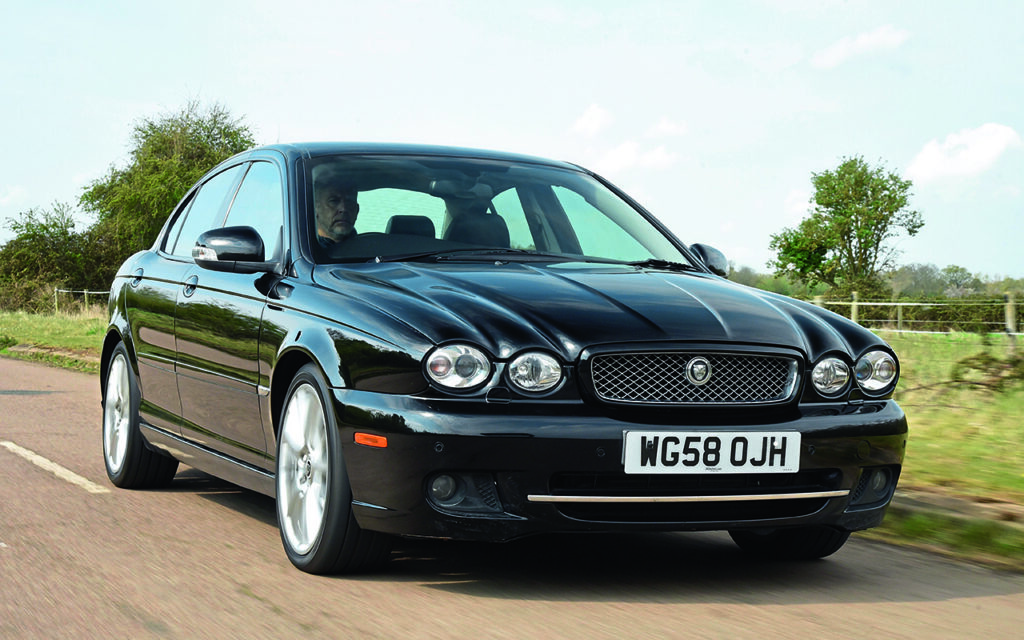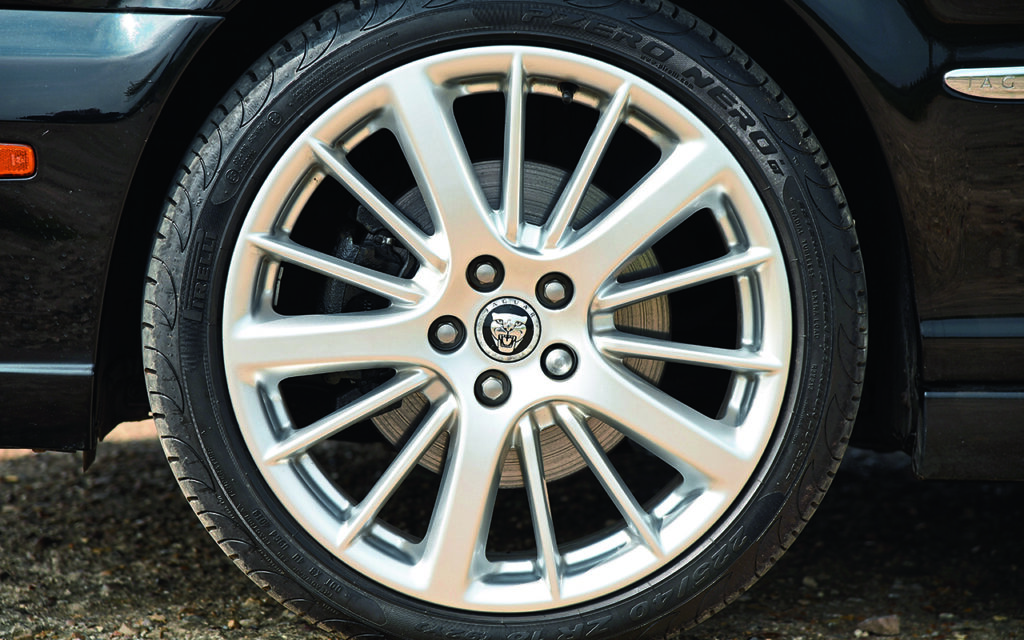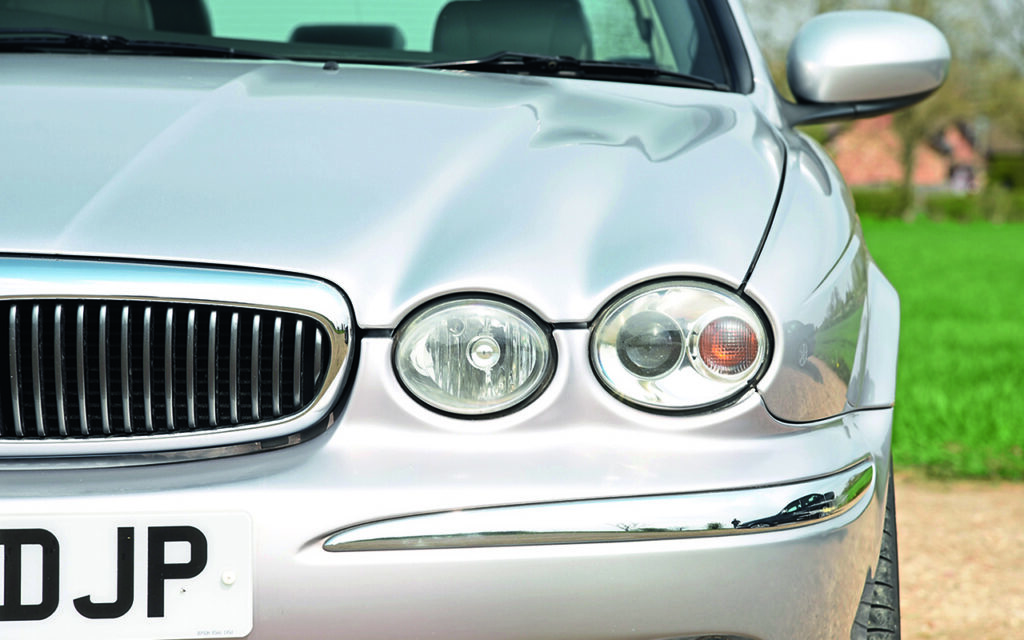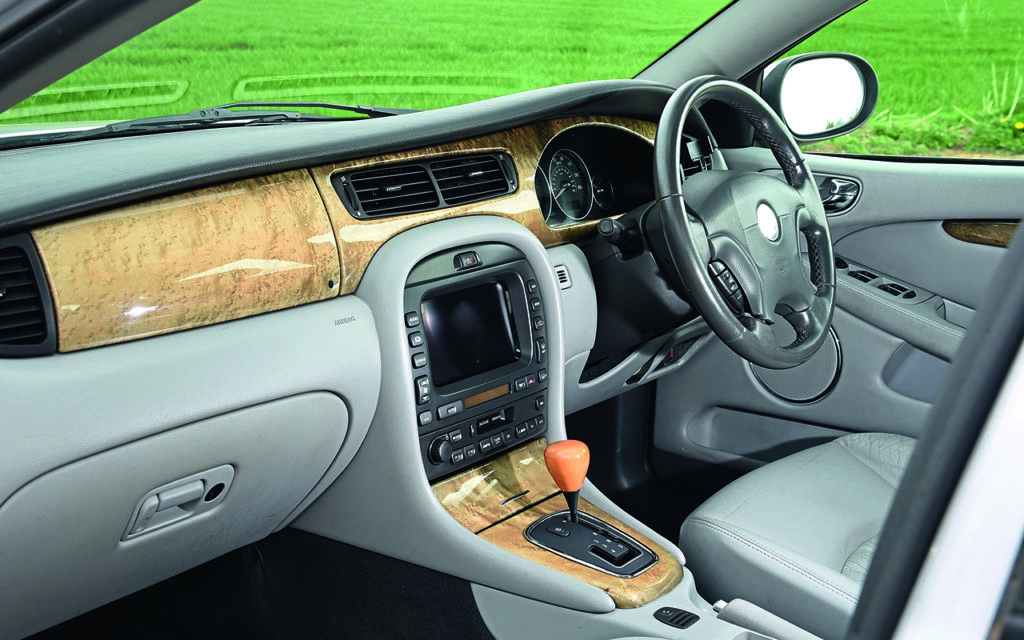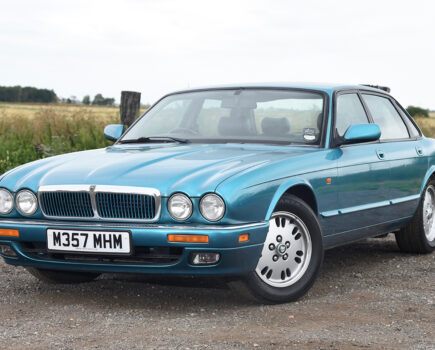The Jaguar X-Type was the British brand’s answer to the might of the BMW 3 Series and Audi A4 – Jaguar’s first compact executive car
Words and images: Paul Walton
“What a wicked game you play, to make me feel this way; what a wicked thing to do, to let me dream of you,” went the introductory line from Chris Isaak’s hit single Wicked Game on the original TV advert for the all-new Jaguar X-Type in June 2001.
It was all part of Jaguar’s marketing strategy to make the ‘baby’ saloon appeal to a new audience for the company. A much younger demographic. The very type of person who would have been in their 20s when Isaak’s one and only UK top ten was at its peak ten years earlier.
And, as a silver X-Type weaved its way along a snowy mountain pass, its all-wheel-drive chassis making light work of the treacherous conditions, its 30-something driver ignores the advances of a supermodel for the pleasure of driving his car as Isaak bursts into a crescendo of “and I…. don’t want to fall in love, with you…”
The ad closes with a slogan flashing up – The New Jag Generation – before finishing with the line, The Power of Performance.
An old television advert might not sound like much, but for Jaguar this was a pivotal moment. It was arguably the first time that the company had truly looked forward in its advertising rather than relying on the laurels of the past. The very fact that the marketeers referred to the X-Type as a ‘Jag’ being a statement in itself. This was new, cool, not stuffy. Everyone called a Jaguar a Jag, so why shouldn’t Jaguar?
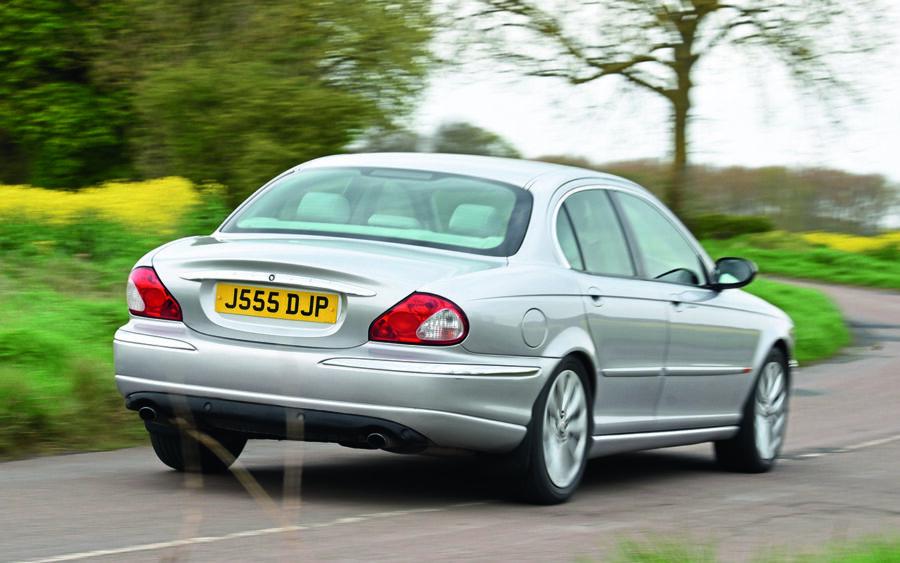
It had also spent a fortune on the advert, which was filmed in New Zealand and was directed by Grammy-winning Australian producer Jeff Darling; just part of the almost limitless budget that Jaguar spent on launching its most important new car in a generation.
It didn’t matter that the implausibly handsome chap behind the wheel of the TV advert car had no usable cupholder, no company-car, tax-friendly, diesel option or that the rear subframe was from a Mondeo estate – he was in his element. Cool, confident and in his prime. The very kind of customer that Jaguar was desperate to get behind the wheel of its critically important new model. After all, a lot was riding on X400 (the X-Type’s internal codename). Not only was there a £300m investment at Ford’s Halewood factory, where the X-Type would be built on the old Escort line, but there was also a brief to double Jaguar sales, which were steadily rising on the back of the new S-Type and revised XJ ranges.
“The X-Type connects Jaguar with a different type of customer,” said the company’s managing director, Jonathan Browning, at the X-Type press launch in Dijon, France, in May 2001. “It challenges existing perceptions of Jaguar, broadening the appeal and accessibility of the marque, and it drives forward our ambitious growth strategy, which began with the launch of the S-Type in 1998. Today, Jaguar is selling more cars in more markets than ever before and X-Type is targeted with helping us double sales once again.”
His statement was backed up by Jaguar’s marketing director, Phil Cazaly, who said, “We expect the X-Type to attract a significant number of new customers, particularly younger people who previously may have regarded a Jaguar as beyond their reach or as being unsuitable for their active lifestyles. Delivering practicality as well as performance and style, the X-Type presents a completely new proposition. It will help us to make rapid advances in areas where we have traditionally been under-represented, such as with women drivers and amongst ‘user-chooser’ company car drivers.”
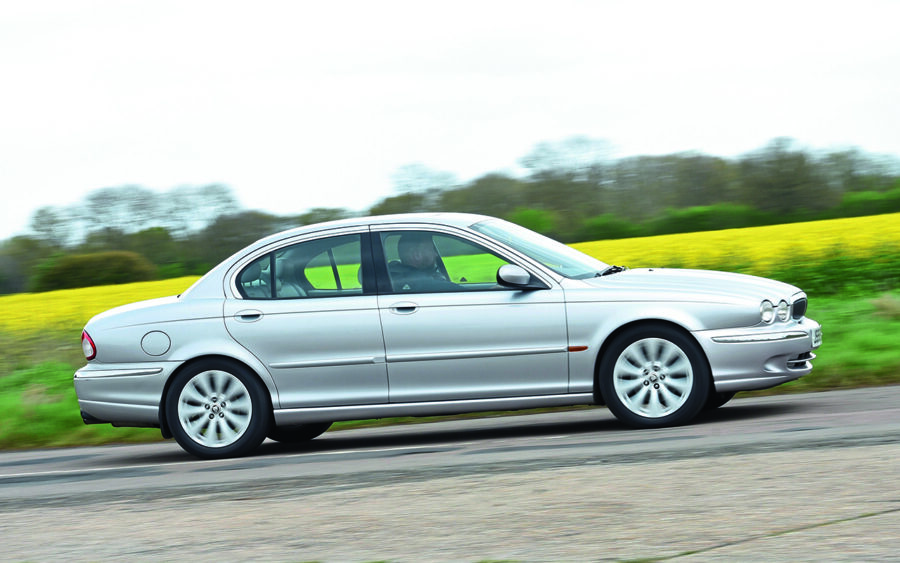
There was certainly a lot of hubris around Ford’s Premier Auto Group (PAG) when the X-Type made its debut in 2001. Here, at long last, was the car that would finally give Jaguar a foothold in the burgeoning compact executive market. A saloon that would not only take the fight to BMW and Audi, but could do it with the style, sophistication and driver appeal that only a Jaguar could offer.
Conceived as part of Ford’s ten-year Jaguar Master Plan, the approach to broadening the brand’s model range was a softly, softly one. First, in 1998, came the unapologetically retro S-Type, a car that took Jaguar into a new market with one foot firmly in the past.
The X-Type was already a concept back then and two options were on the table. One was to build the car on a truncated S-Type platform, maintaining the traditional Jaguar virtue of rear-wheel drive. The second was to look elsewhere in the Ford stable for a platform that could also be developed.
Ironically, given what followed, if Jaguar hadn’t over-estimated the production potential of the X400, the rear-drive platform may have won out. But, to do so, it would need to be built alongside the S-Type at Castle Bromwich, where capacity for Jaguar’s projected 100,000 units per annum simply didn’t exist. Where PAG did have that capacity, though, was Halewood, Merseyside. From 1968, the site had been home to another British icon, the Ford Escort. But, with Escort production finally drawing to a halt three years after its replacement, the Belgian-built Focus, had sent shockwaves through the compact hatchback sector, the facility was to stand idle. Building the new Jaguar there would offset many job losses and keep the factory alive, and it would secure much-needed investment into the project via the Government’s North-West Development Agency.
The brief was to create a car for what the marketing types quickly categorised, The New Jag Generation. A Jaguar that would appeal to the under 40s – meaning less of a focus on wood and leather, and the emphasis instead skewed towards technology, driver appeal and – of course – what ‘Jaguar’ stood for.

Under the skin, the decision was made to build the X-Type on Ford’s CD132 platform, which underpinned the Mondeo Mk3 and would also go on to be the base platform for the Volvo S40 and Mazda 6. A sensible approach from an engineering and cost-saving perspective, but one that made Jaguar’s senior management twitchy. Jaguar was a company renowned for its bespoke engineering, and it was imperative to play down the Mondeo connection – something which would later backfire massively.
So keen was Jaguar to not talk about the Mondeo bits that the automotive media were determined to do the opposite, and the ‘Mondeo Jag’ reputation stuck fast, the irony being that there was less than 20 percent commonality between a Mondeo hatch and an X-Type, which had the floor pan, bulkhead and some of the front sub-assemblies of the Mondeo and the heavy duty rear subframe of the Mondeo Estate. Otherwise, it was 80 percent Jaguar. To paraphrase Michael Caine, not a lot of people know that.
The engineering brief stipulated that the model had to ‘feel like a Jaguar’. It also instructed that the X-Type would have to have the best steering of any car in its class, and ride comfort that was befitting of the brand, as an exemplary ride was a Jaguar hallmark. And for that it earned ten out of ten.
The CD132 platform was a good one. When the Mondeo was launched in 2000, it was universally praised for its handling ability, comfort and delectable balance, which bade well for the X-Type. But, Jaguar’s resistance to adopt front-wheel drive from the outset meant that all launch models would have four-wheel drive, with a 60 percent bias towards the rear. In some ways, that was mistake number one, as it bumped the price up in order to not upset Jaguar purists.
The second dropped ball was the decision to offer the X-Type with V6 petrol engines only, which was great for setting a performance benchmark for the model, but not ideal when competing with German rivals in fleet sales, fuel economy or CO2 stakes, where their modern and efficient diesels were streets ahead. In some respects, you have to show some sympathy to Jaguar here, as when the X-Type was conceived most company-car tax schemes were focused on engine size and list price rather than exhaust emissions, but in 2001 the UK government delivered a cruel blow in the form of CO2-based benefit-in-kind tax, and a V6-powered Jaguar was no competition to a BMW 320d in terms of its effect on your take-home pay.
It’s a shame, as the X-Type engines were fabulous. The range-topper was the same 3.0-litre 231bhp unit found in the S-Type, while a smaller capacity 2.5-litre derivative of the engine was specifically developed for the model, offering 194bhp and later fitted to a new entry-level S-Type as well.

Styling-wise, the X400 would take the proportions and styling cues of the XJ, so that meant quad headlamps and a traditionally curved D-pillar that made it instantly identifiable as a Jaguar, but in a far less retro way than the S-Type, as the newcomer needed to have a bolder, more youthful appeal. It was the last Jaguar to be fully styled under the supervision of Jaguar’s late design director Geoff Lawson, with much of the exterior styling attributed to Wayne Burgess (who went on to pen many of Jaguar’s much bolder designs of the 2000s and 2010s).
The X-Type was revealed in February 2001, although it would be a further four months before it went into full-scale production. That gave Jaguar just enough time to tie itself in knots around how the car would be marketed.
Rather than be upfront about the basic architecture of the car, Jaguar persisted with marketing messages about the model’s ‘Jaguarness’, which were all well and good, but led the automotive media into a mode of suspicion and cynicism during the car’s protracted launch. The irony being, of course, that the Mondeo was universally considered to be the best-handling car in its class, and the Audi A4 and A6 were based on the platform of the inferior VW Passat, yet this did the German firm no harm at all…
Irrespective, the X-Type was well received by the motoring media, who loved its handling and the fact it was a ‘baby Jag’ – something that was clearly very welcome and had been a long time coming.
Their biggest criticism was of the engine choices. The 2.5- and 3.0-litre V6s were great engines, make no mistake, but they appealed only to the upper end of the compact executive market and were no threat, in terms of running costs, to the four-cylinder and diesel units offered by rivals. They also failed to give Jaguar the foothold it needed in the fleet market, thanks to that shift towards CO2-based tax.
Jaguar knew this and had to react quickly, accelerating the development of models it should have made available from the outset. The first was the X-Type 2.0, introduced in early 2002. The 2.0 (which was, technically, a 2.1-litre) came with a shorter stroke version of the 2.5 petrol V6 and was more economical, but was also front-wheel-drive only, making it the first ever Jaguar to have power supplied at the ‘wrong’ end. The lesson Jaguar learned here, a bit too late, was that most buyers didn’t actually care.
The following year, the book of Jaguar tradition was torn to shreds and the best-selling of all X-Types arrived – the diesel. The Jaguar engine was a development of the Duratorq 2.0- and 2.2-litre TDCi engines found in the Mondeo and (whisper it…) Transit. Buyers and drivers didn’t seem to care, while fleet managers were delighted. Here was another option for them that promised decent residual values, low running costs and could be bought with a batch of Fords if necessary to help negotiate a pack deal.
Then, in 2004, came the handsome estate, the first production Jaguar under new design director Ian Callum. If only Jaguar had bitten the bullet in the first instance, launching the X-TYPE with a full model range, then it may have achieved the intended 100,000 annual sales. In reality, the first year of the full range being available (2004) was also the X-Type’s best, with total production of just over 51,000 – just over half of the initial projection.
The X-Type’s final round of changes came in late 2007, with a facelifted model unveiled at the Canary Wharf Motor Expo in London – a low-key event for a low-key facelift.

Among the nip-and-tuck elements were chunkier front and rear bumpers, increasing the length of the car by 10mm, a restyled grille, mirror-mounted indicators, a modernised and uprated dashboard, twin cupholders (at last) and a new six-speed manual gearbox, along with a long overdue sequential automatic transmission option on diesel variants.
The changes refreshed the car and kept sales ticking along, but the death knell would sound for the X-Type in the near future. Because, in March 2008, on the back of the global economic turndown and the Chapter 11 bankruptcy filings from its close rivals General Motors and Chrysler, Ford was forced to sell off the Premier Auto Group brands and instead focus on its ‘One Ford’ strategy. Jaguar and Land Rover were sold as one, to Indian-based Tata, the owners of other once-British companies, including British Steel and Tetley Tea.
Tata quickly revisited the Jaguar Land Rover (JLR) business plan and decided to bring forward production of the Land Rover LRX concept (which would become the Range Rover Evoque) and earmarked it for the Halewood production facility, where the Freelander, on which it was based, was already taking up the slack from the X-Type’s unfulfilled potential. The X-Type’s days were numbered in readiness for the more profitable SUV. The move accelerated the end of X-Type production – to December 2009 rather than March 2011, the model’s original lifecycle. It was an ignominious end for what was once Jaguar’s most important new model ever.

